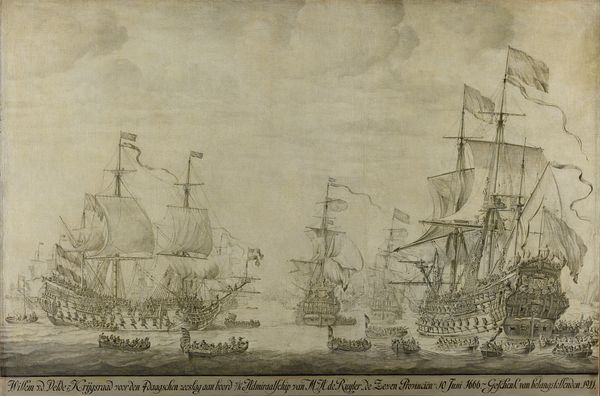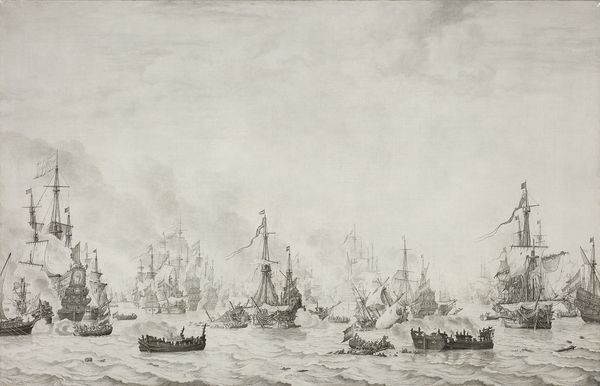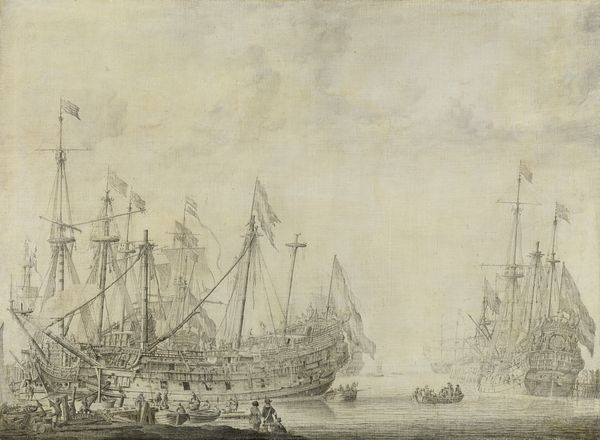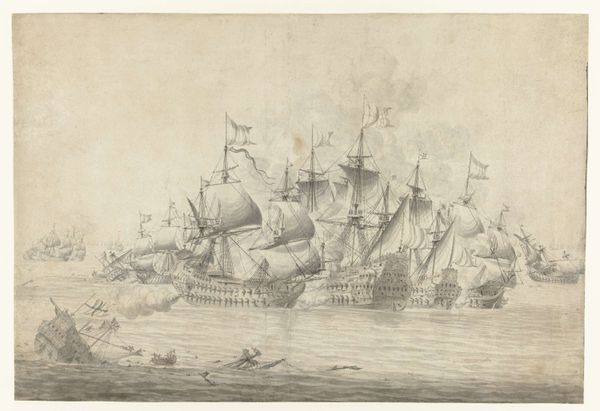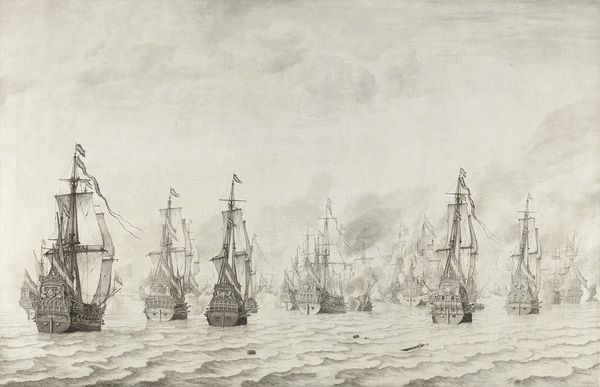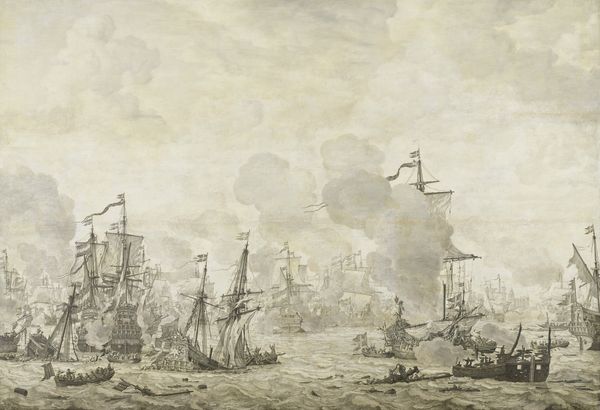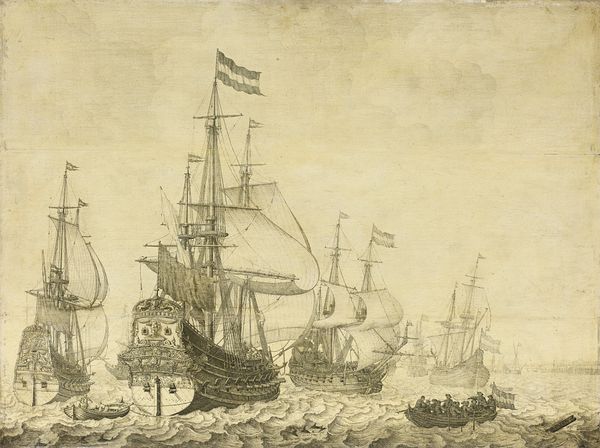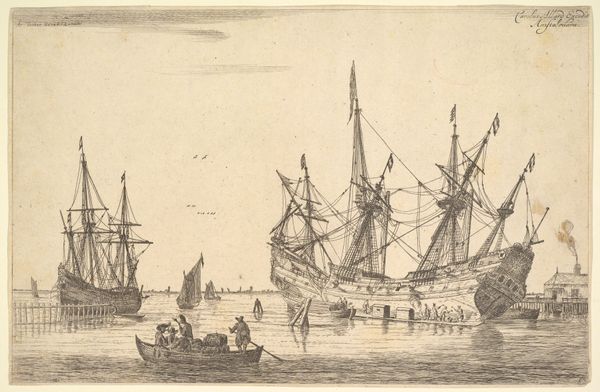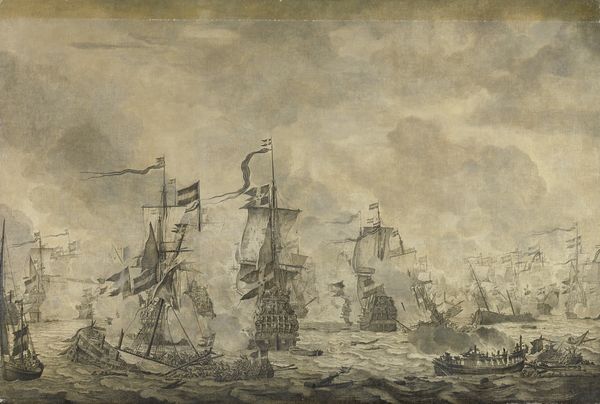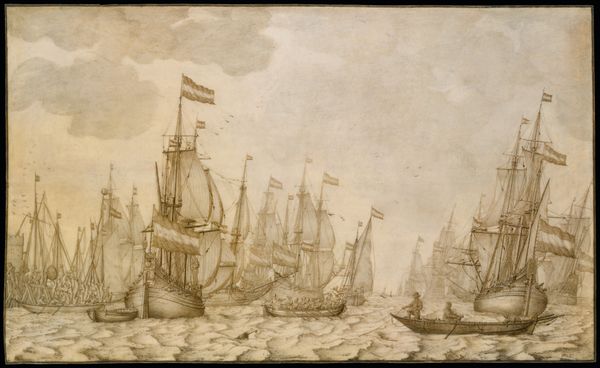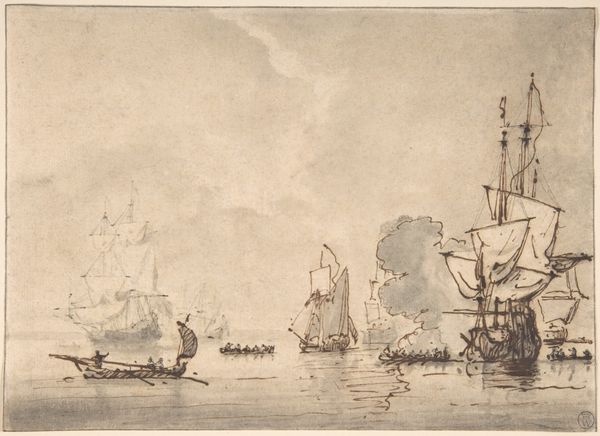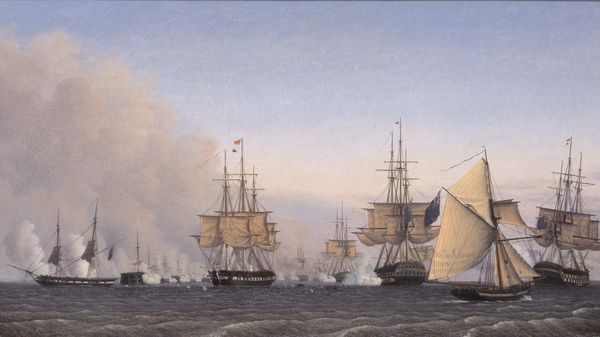
"The Failed Attack of the English on the Return Fleet in the Port of Bergen, Norway, 12 August 1665: an episode from the Second Anglo-Dutch War" 1669
0:00
0:00
drawing, ink, pen
#
drawing
#
baroque
#
dutch-golden-age
#
pencil sketch
#
landscape
#
charcoal drawing
#
ink
#
pen
#
history-painting
#
watercolor
Dimensions: height 84 cm, width 188 cm, depth 7 cm
Copyright: Rijks Museum: Open Domain
Editor: Here we have Willem van de Velde I's "The Failed Attack of the English on the Return Fleet in the Port of Bergen, Norway, 12 August 1665: an episode from the Second Anglo-Dutch War," created in 1669. The detail in this ink and pen drawing is just incredible. What's most striking to you about this piece? Curator: I'm particularly interested in the labor embedded within the artwork's production. Consider the social and economic context of 17th-century maritime power. These ships represent not just naval might, but trade routes, colonial exploitation, and the burgeoning capitalist system. The meticulous drawing, almost like technical illustration, serves a purpose beyond mere representation; it's a record, a document tied to Dutch mercantile power. Do you notice how the focus is not on individual heroics but on the massed ships, the engines of commerce and war? Editor: That makes sense. I was so focused on the artistic skill, I missed that point about the ships being almost like machines themselves. How would you say the choice of drawing over, say, painting, connects to your ideas about materiality? Curator: Precisely! The drawing allows for a detailed, almost forensic, examination of the materials of shipbuilding, rigging, and naval technology. The availability, cost, and sourcing of these materials – the wood, the canvas, the rope – directly underpinned naval capabilities and colonial reach. We're not just seeing ships; we're seeing a material infrastructure of empire, sketched with tools reflecting its dominance. Consider what the widespread adoption of specific materials might tell us about this historical moment. Editor: So it's about shifting our attention from the artistic genius of the creator to the cultural and material factors that shaped the work? Curator: Exactly! By focusing on process, materials, and social context, we get closer to understanding how art reflects and shapes power dynamics of its time. Editor: That's a completely different way of seeing this. Thanks for helping me dig a bit deeper. Curator: My pleasure! It's important to remember art always exists within – and is constructed by – material conditions.
Comments
No comments
Be the first to comment and join the conversation on the ultimate creative platform.
